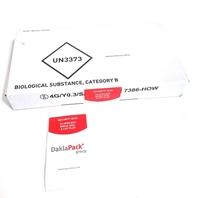Eco label
-
-
Designed for recycling (plastic)(3)
UN3373
-
-
No(1)
-
Yes(6)
P650
-
-
No(1)
-
Yes(6)
P620
-
-
No(1)
-
Yes(6)
Letterpost
-
-
Yes(5)
Color
-
-
Grey(1)
-
Red(1)
-
Transparent(1)
-
White(6)
Material
-
-
LW 60 white permanent(1)
-
Paper(2)
Transparency
-
-
Completely transparent(1)
-
Non transparent(6)
Labels
(8)FAQ’s
What do UN3373 shipping labels indicate and when are they required for medical shipments?
UN3373 shipping labels are designated for Category B biological substances. This indicates shipments contain materials that are not in a form generally capable of causing disease in humans or animals. These labels are required when shipping diagnostic specimens, clinical samples, or other biological substances that meet the criteria for Category B. The presence of a UN3373 label informs handlers of the contents' nature, ensuring the package is treated with the necessary care and in compliance with transport regulations.
Are there specific labeling requirements for shipping dry ice (solid carbon dioxide) in medical packaging?
Yes, shipping solid carbon dioxide (dry ice), classified under UN1845, in medical packaging requires specific labeling that includes the UN1845 identifier, the proper shipping name (Carbon Dioxide, Solid or Dry Ice), and the net quantity of dry ice in kilograms. The label must be prominently displayed on the external surface of the shipping container. This ensures that handlers are aware of the potential hazards, such as the risk of asphyxiation in poorly ventilated areas and the possibility of pressure buildup within packaging. Proper labeling is crucial for ensuring the safe transport of medical materials that require refrigeration.
When is a UN2814 label necessary for medical transport, and what does it signify?
A UN2814 label is necessary when transporting infectious substances that are known to contain pathogens that can cause severe illnesses in humans or animals. These materials are classified as Category A infectious substances. The label signifies that the contents have the potential to pose a significant risk to health and safety. This requires special attention to packaging, labeling, and documentation. Using a UN2814 label ensures that all parties involved in the transport chain are aware of the hazards and can take appropriate precautions to handle and transport the package safely.
It's important to note that the transport of Category A infectious substances requires strict adherence to these packaging and labeling regulations to ensure safety during transportation. Proper training and certification are also required for anyone involved in packing or shipping these materials, as per the Department of Transportation or IATA regulations.
What are IATA-DGR labels, and why are they important for medical packaging and transport?
IATA-DGR labels are required for shipments that comply with the International Air Transport Association's Dangerous Goods Regulations. These labels are crucial for medical packaging and transport as they indicate specific hazards associated with the shipment, such as infectious substances, dry ice, or other dangerous goods. They ensure that the package is handled correctly and transported under conditions that meet global safety standards. This minimizes the risk of accidents and ensures the integrity of the medical contents during air transport.
What is the difference between P650 and P620 shipping labels and their applications in medical shipments?
The P650 and P620 shipping labels indicate compliance with specific packaging instructions for transporting infectious substances. P620 is used for Category A infectious substances, which are known to contain pathogens that can cause severe illnesses in humans or animals. P650 applies to Category B infectious substances, which are not in a form generally capable of causing disease. The key difference lies in the level of hazard they represent. P620 requires more stringent packaging and labeling requirements due to the higher risk associated with the contents. Both labels ensure that medical shipments are packaged, labeled, and documented in compliance with regulations to safeguard handlers and the public.
How do I ensure compliance with international regulations when using medical shipping labels for hazardous materials?
Ensuring compliance involves several steps: understanding the classification of your medical material (e.g., Category A or B infectious substance, dry ice), selecting the appropriate labels (UN3373, UN2814, UN3245, etc.), and adhering to the specific packaging instructions (P620 or P650) for those materials. Additionally, staying updated with the latest regulations from authoritative bodies like the DOT and IATA for air transport and ensuring all required documentation is accurately completed and accompanies the shipment are essential. Consulting with regulatory experts or employing a specialized medical packaging company can help maintain compliance.
What information is required on medical shipping labels to meet the standards for UN3373, UN3245, UN1845, UN2814, IATA-DGR, P650, and P620?
Meeting the standards for UN3373, UN3245, UN1845, UN2814, as well as IATA-DGR, P650, and P620 for medical shipping labels requires the inclusion of specific and detailed information to ensure compliance and safety. Here's a breakdown of the key elements that must be present on medical shipping labels for each category:
For UN3373 (Biological Substance, Category B):
- The proper classification name "BIOLOGICAL SUBSTANCE, CATEGORY B" alongside the UN number, UN3373.
- The name and address of the shipper and consignee.
- The diamond-shaped mark indicating "Biological Substance, Category B".
- The diamond must be a minimum of 50 mm x 50 mm, with the width of the line being at least 2 mm and the letters and numbers being at least 6 mm high. This label needs to be displayed on the external surface of the outer packaging on a background of a contrasting color, making it clearly visible and legible
For UN3245 (Solid Carbon Dioxide / Dry ice, when used as a refrigerant for UN3373 or UN2814):
- The proper shipping name "Carbon Dioxide, solid" or "Dry ice" alongside the UN number, UN3245.
- The net quantity of dry ice in kilograms.
- The name and address of the shipper and consignee.
For UN1845 (Solid Carbon Dioxide / Dry ice, as a dangerous good):
- Similar to UN3245, it requires the proper shipping name, UN number, net quantity of dry ice, and shipper/consignee information.
For UN2814 (Infectious substances affecting humans):
- The proper shipping name "Infectious substance, affecting humans" alongside the UN number, UN2814.
- The name and address of the shipper and consignee.
- A statement of the infectious substance (if known), and contact number for more information.
For IATA-DGR:
- Compliance with IATA Dangerous Goods Regulations, which includes proper identification, classification, packaging, marking/labeling, and documentation of the shipment.
- The "Shipper’s Declaration for Dangerous Goods" if applicable.
What is For P650?
P650 is the packaging instruction for UN3373. In summary the requirements for P650 are as follows:
- Triple packaging consisting of a primary receptacle, a secondary packaging, and a rigid outer packaging.
- For liquids, both the primary and secondary packagings must be leak-proof. For solids, the primary receptacle must be sift-proof. The secondary packaging must prevent any leakage from the primary receptacle under normal conditions of transport.
- Absorbent material between the primary receptacle and the secondary packaging and must be able to absorb the entire contents of the primary receptacles.
- In case the package is (partially) transported via air the primary or the secondary receptacle must be able to withstand a 95KPa pressure differential.
- The outer packaging must display the appropriate labels, including the UN3373 marking and the label "Biological Substance, Category B". Additionally, shipping documentation that identifies the contents should accompany the shipment.
- The package must pass a 1.2-meter drop test.
- If multiple primary receptacles are packed they are not allowed to touch each other and must be properly separated.
For P620 (Packaging instruction for UN2814 and UN2900):
- Triple packaging similar to P650 but designed for Infectious Substances affecting humans or animals (UN2814/UN2900).
- Absorbent material and leak-proof secondary packaging.
- In case the package is (partially) transported via air the primary or the secondary receptacle must be able to withstand a 95KPa pressure differential at temperatures ranging from -40 degrees celsius to + 55 degrees celsius. Please note that not all 95KPa rated bags can withstand such a pressure differential at these temperatures. Our IATA Safety Bags have been tested extensively and can withstand this pressure differential at this temperature range.
- The package must pass a 9-meter drop test for solids or a 1.2-meter drop test for liquids.
Meeting these labeling requirements is crucial for compliance and the safety of all those who handle these shipments during transportation. Each label should be clearly printed and securely attached to the package to ensure visibility and durability throughout the journey.
Would you like to keep informed about the latest developments regarding our packaging and services, special offers and other interesting information?
Register for our newsletter by entering your email address below.
 (201) 630-6480
(201) 630-6480
 info@daklapack.us
info@daklapack.us




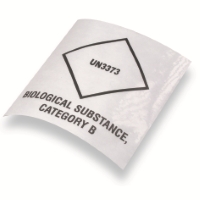
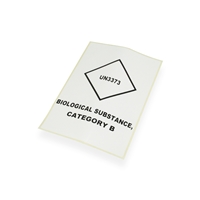
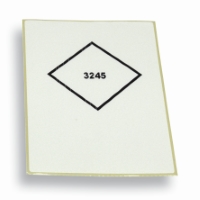

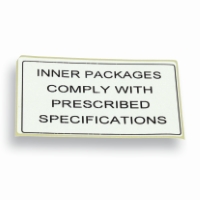
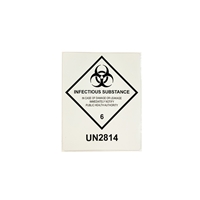
-6_30-inch-x-6_38-inch-White.jpg)
